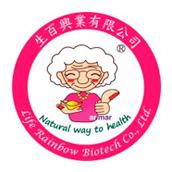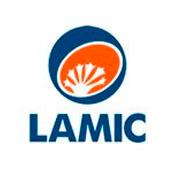Explore all the information on
Mycotoxins
Welcome to the page about Mycotoxins of Engormix; a source of knowledge on Mycotoxins.
In the realm of food safety, mycotoxins present a significant challenge to manufacturers, processors, and regulatory bodies alike. These toxic compounds, produced by certain fungi under specific environmental conditions, can contaminate various food and feed products, posing serious health risks to consumers and...
Comments : 0
Recommendations: 0
Introduction Modern maize, belonging to the genus Zea, was domesticated in southern Mexico 9000 years ago from wild, annual tropical grasses called teosintes, with the primary ancestor being Parviglumis (Zea mays ssp. parviglumis) which survives today in the wild (Matsuoka et al., 2002). There are additional species of teosintes that continue to grow in the wild in Mexico and Central America including the perennial Zea diploperennis (Iltis and Doebley, 1980). Following its...
Comments : 0
Recommendations: 0
INTRODUCTION Maize (Zea mays L.) is a staple food in many parts of the world including sub-Saharan Africa (SSA). In Nigeria and some other West African countries, it is traditionally transformed by submerged fermentation to ogi – a complementary weaning food for infants and young children, convenient food for the sick, convalescent and elderly or quick breakfast mostly for those living in rural areas characterized by low income (Onyekwere et al., 1989; Steinkraus,...
Comments : 0
Recommendations: 0
In 2023 mycotoxins semiannual survey, Life Rainbow Biotech randomly collected 152 feed samples of raw materials and feed mills in farms and analyzed. The samples were tested for aflatoxins (B1, B2, G1, and G2), zearalenone, fumonisins (B1, B2, and B3), and deoxynivalenol (DON) by the ELISA Mycotoxin analysis kit. Contamination in animal feed 152 feed samples collected, and 77% were contaminated with fumonisins ( table 1 ). The maximum concentrations of aflatoxins,...
Comments : 0
Recommendations: 0
INTRODUCTION Mycotoxins are substances that occur naturally in the environment (1, 2). In addition to mycoestrogens such as zearalenone (3, 4), selected trichothecenes, including DON and/or its metabolites (but in vitro), can affect steroidogenesis (2) and changes in gene expression, which suggests that these compounds could disrupt hormonal homeostasis (1). Deoxynivalenol (DON), a polar organic compound produced mainly by Fusarium graminearum and Fusarium culmorum (5), is...
Comments : 0
Recommendations: 0
Mycotoxins are a major problem in the poultry industry causing significant negative effects on animal health, productivity, and the economics of production. Binders such as bentonites are typically added to poultry diets to adsorb mycotoxins in the gastrointestinal tract and protect the birds against the harmful effects of mycotoxins. Bentonites are effective in preventing aflatoxicosis, however, their activity against zearalenone, ochratoxin, and trichothecenes is limited (Bhatti et al.,...
Comments : 0
Recommendations: 0
Mycotoxins are secondary metabolites produced by fungi, the most abundant of which belong to the genera Aspergillus, Penicillium, and Fusarium . The conditions required for fungal development and the production of mycotoxins vary strongly with the substrate on which the fungal species develop.Because mycotoxins are mainly present in food and feed, the gut is the first target for mycotoxin toxicity, but it is also the site of the absorption of mycotoxins that leads to...
Comments : 0
Recommendations: 0
Mycotoxins are produced by fungi and can lead to sickness in humans and animals, which explains why testing for them in crops, feeds, and food products is so important and is often a regulatory and customer requirement. Fortunately, testing technologies have evolved from slow, tedious, and complicated to smart, fast, and data connected. Tests vary in their performance capabilities and suitability for field, process, or lab environments. With a number of different options, you may be...
Comments : 0
Recommendations: 0
.jpg&w=3840&q=75)
Deependra Paneru (University of Georgia) speaks on how mycotoxins in the feed impact growth performance and impair the recovery of the pullets infected with coccidiosis, in this Engormix interview during IPPE 2024 in Atlanta, USA....
Comments : 0
Recommendations: 0
INTRODUCTION The presence of mycotoxins is inherent to many food and feed products worldwide (Bhat et al., 2010; Marroquín-Cardona et al., 2014). Hallmarks of their presence and their impact on animal and human health are encountered throughout history. Ergotism, also known as “St. Anthony’s fire” occurred in several areas in Europe during the tenth century (Schiff, 2006) and was caused by the consumption of rye containing ergot alkaloids, produced by...
Comments : 0
Recommendations: 0
INTRODUCTION Mycotoxins are toxic compounds produced by different fungal species, Fusarium being responsible for most contamination of feedstuffs in the field. Among more than 400 identified mycotoxins, deoxynivalenol (DON) and zearalenone (ZEN) are of most concern for the pig industry. Pigs are very sensitive to both DON and ZEN. When acute dietary exposure occurs, DON can lead to vomiting and feed refusal (1), whereas ZEN has oestrogenic effects (2). However, in practice, acute...
Comments : 0
Recommendations: 0
INTRODUCTION Fusarium head blight (FHB), caused by Fusarium graminearum Schwabe [teleomorph: Gibberella zeae (Schwein.) Petch], is an economically important disease of barley (Hordeum vulgare L.) that has resulted in massive commercial losses (Wilson et al., 2018). F. graminearum is capable of producing multiple, type B trichothecene mycotoxins [Deoxynivalenol (DON), 3-acetyldeoxynivalenol (3ADON), 15-acetyldeoxynivalenol (15ADON), nivalenol (NIV), and 4-acetylnivalenol (4-ANIV)],...
Comments : 0
Recommendations: 0
INTRODUCTION Durum wheat (Triticum durum Desf.) is the most widespread crop in the Mediterranean area. Sixty-seven percent of the Italian production of durum wheat comes from the Southern regions and it is used mainly for producing pasta (Fagnano et al., 2012). Quaranta et al. (2010) confirmed the importance of environmental local conditions in driving mycotoxin contamination in durum wheat. They reported that Southern Italy is an area particularly suitable for producing high...
Comments : 0
Recommendations: 0
INTRODUCTION Maize (Zea mays) is one of the main sources for food and feed production in the world (Chulze, 2010). In 2017, more than 197 million hectares were grown with maize worldwide resulting in production yield of 1.13 billion tons of maize (FAOSTAT, 2020). Ensuring the quality and safety of maize for feed and food production is essential. One of the major quality and safety concerns is infection of the maize plants with fungi and the contamination of maize kernels with...
Comments : 0
Recommendations: 0
Deependra Paneru (University of Georgia) An experiment was conducted to investigate the effects of subclinical mycotoxin exposure on the growth performance and immune cell dynamics in pullets exposed to coccidiosis. Using a 2x2 factorial design, a total of 288 four-week-old Hy-Line W36 pullets were randomly allocated to four treatment groups, each containing six replicated cages with 12 birds. The experimental groups were exposed to either...
Comments : 0
Recommendations: 0
.jpg&w=3840&q=75)
Discover how Fumo-V™ ONE, the latest innovation in feed testing technology, simplifies both on-site and lab-based analysis of complex finished feed. Haer what Carlton Skipper, SE Sales Representative at VICAM, has to say about it...
Comments : 0
Recommendations: 0
.jpg&w=3840&q=75)
Join Lanny Smith, Global Sales Manager at VICAM, as he unveils how VICAM sets itself apart in the realm of mycotoxin testing solutions for the feed chain....
Comments : 0
Recommendations: 0
.jpg&w=3840&q=75)
Explore the world of mycotoxin detection with Colin Lee, VICAM Canada Sales Representative, as he sheds light on the innovative use of immunoaffinity columns...
Comments : 0
Recommendations: 0
.jpg&w=3840&q=75)
Join Colin Lee, VICAM Canada Sales Representative, as he delves into the intricate methodologies utilized by Canadian laboratories for comprehensive mycotoxin testing. Also, he points out the benefits of Vicam’s Immunoaffinity Columns...
Comments : 0
Recommendations: 0
Mycotoxins interfere in the vitamin D metabolism leading to poor calcium absorption, causing Lameness. Does anyone agree to this point? ...
Comments : 8
Recommendations: 2



.jpg&w=3840&q=75)










